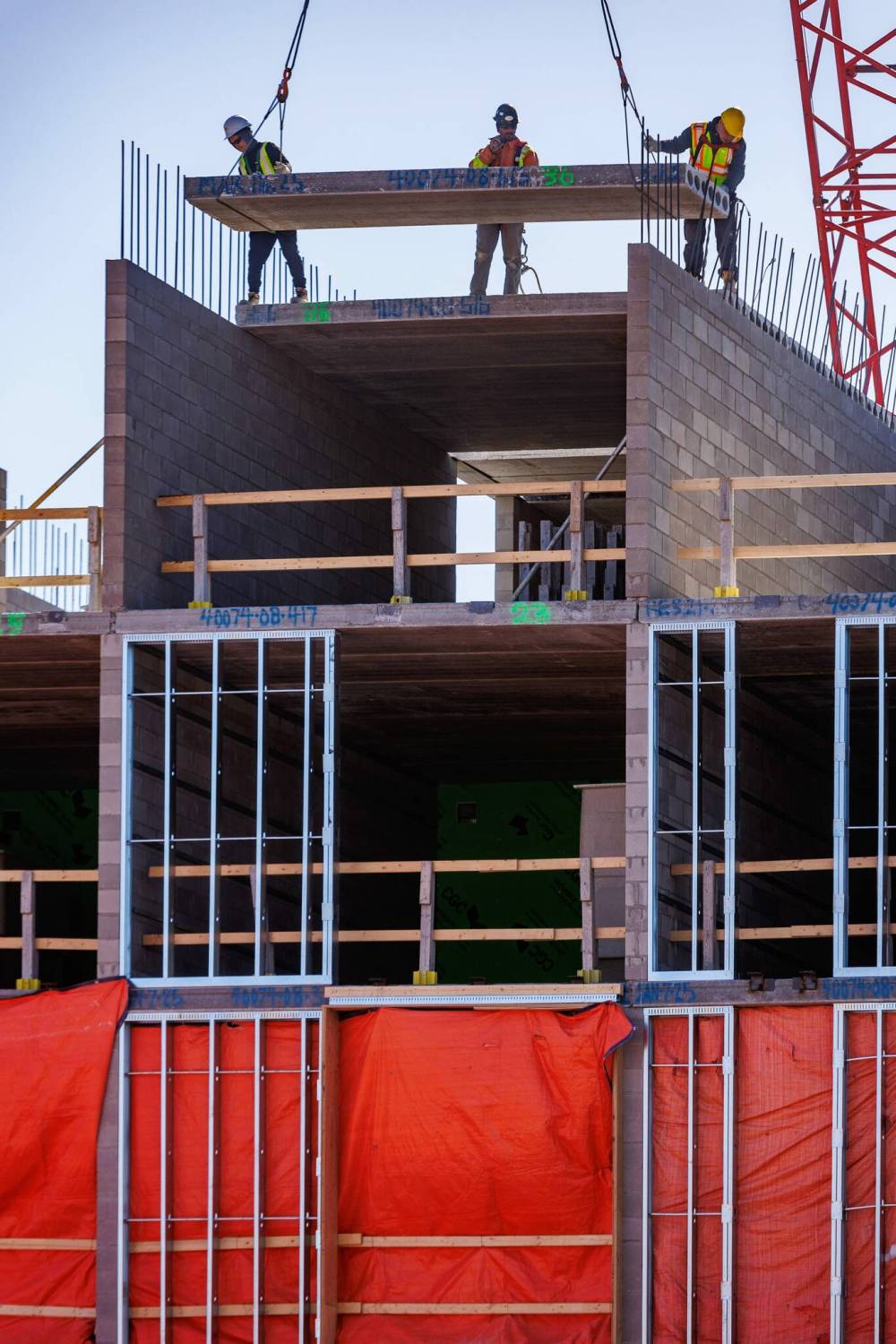Manitoba ‘particularly vulnerable’ to tariff-fuelled core building materials price hikes: CMHC
Advertisement
Read this article for free:
or
Already have an account? Log in here »
To continue reading, please subscribe:
Monthly Digital Subscription
$0 for the first 4 weeks*
- Enjoy unlimited reading on winnipegfreepress.com
- Read the E-Edition, our digital replica newspaper
- Access News Break, our award-winning app
- Play interactive puzzles
*No charge for 4 weeks then price increases to the regular rate of $19.00 plus GST every four weeks. Offer available to new and qualified returning subscribers only. Cancel any time.
Monthly Digital Subscription
$4.75/week*
- Enjoy unlimited reading on winnipegfreepress.com
- Read the E-Edition, our digital replica newspaper
- Access News Break, our award-winning app
- Play interactive puzzles
*Billed as $19 plus GST every four weeks. Cancel any time.
To continue reading, please subscribe:
Add Free Press access to your Brandon Sun subscription for only an additional
$1 for the first 4 weeks*
*Your next subscription payment will increase by $1.00 and you will be charged $16.99 plus GST for four weeks. After four weeks, your payment will increase to $23.99 plus GST every four weeks.
Read unlimited articles for free today:
or
Already have an account? Log in here »
Due to a reliance on imports, tariffs on core building materials could hit Manitoba harder than other provinces.
A Canada Mortgage and Housing Corp. report in February flagged Manitoba and Saskatchewan as facing the highest potential cost increases because of a “heavy” reliance on imported U.S. steel, aluminum and concrete.
The market insights report was assembled as Canadians braced for sweeping 25 per cent tariffs. It was shared with the Free Press recently via a freedom of information request.

MIKE DEAL / FREE PRESS FILES
A Winnipeg Construction Association memo notes a 10.7 per cent drop in permit numbers during the first three months of 2025.
At the time, the CMHC projected Manitoba could see a 3.7 per cent price increase on core building materials: steel, aluminum, concrete and softwood.
“Regions like Manitoba and Saskatchewan are particularly vulnerable due to limited local production capacity,” the report reads.
Four months later, blanket 25 per cent tariffs haven’t appeared. However, a levy applies to all steel and aluminum imports to the U.S.; Canada reciprocated with a swath of 25 per cent tariffs on inbound steel and aluminum.
U.S. President Donald Trump doubled his tariff on the two core building materials Wednesday.
“This report certainly shows that the construction industry in Manitoba has exposure to the evolving tariff situation,” said Darryl Harrison, Winnipeg Construction Association director of stakeholder engagement.
Industry members have been altering their supply chains to minimize costs. It includes sourcing more Canadian steel and ensuring contracts don’t specify American products, Harrison said.
Manitoba imported $32.9 million worth of U.S. iron and steel more than it exported in 2023, per Statistics Canada data. It saw a similar deficit — but $51.9 million — for aluminum.
Despite the economic uncertainty, Manitoba contractors have more bidding opportunities now than a year ago, Harrison said. The Winnipeg Construction Association has an online tender platform.
The projects awarded during the first three months of 2025, however, was a noticeable drop from the same period in 2024. “The tariffs certainly would have an impact,” Harrison said.
U.S. levies — and Canada’s reciprocal fees — came online in March, after months of threats and uncertainty.
A Winnipeg Construction Association memo notes a 10.7 per cent drop in permit numbers during the first three months of 2025. Then, $988 million worth of permits were awarded; the number was $1.1 billion a year earlier.
Institutional permit numbers plunged 53 per cent; industrial followed with a 36 per cent decline. Commercial and residential permits bucked the trend with year-over-year increases.
“My feeling is that people are more comfortable (now) in trying to find ways to manage the uncertainty of tariffs,” Harrison said.
But the recent doubling of American steel and aluminum import tariffs — and possible reactive tariffs from Canada — could have an impact, he added.
Supply-Build Canada hasn’t clocked big differentials in tariff exposure across the country, said president Liz Kovach. Some U.S. suppliers have eaten tariff costs.
“I don’t know how long they’re going to be able to do that,” Kovach said. “(And) now that the tariffs have doubled, it’s going to take a little while to see what that impact will be on the industry.”
Canadian construction firms also face a headwind from an ongoing softwood lumber dispute with the U.S., Kovach added. She’s bracing for a doubling of duties on such exports this year.
Manitoba exported more softwood to the U.S. than it imported in 2023, at a net export of $244 million.
Freight costs — and the distance required to get material — seems to be a large factor in price fluctuations, Kovach said.
The CMHC hasn’t analyzed whether core building material prices have increased since February, but stakeholders say rising prices are affecting construction, spokesman Leonard Catling wrote in a statement. “We continue to closely monitor housing market activity.”
gabrielle.piche@winnipegfreepress.com

Gabrielle Piché reports on business for the Free Press. She interned at the Free Press and worked for its sister outlet, Canstar Community News, before entering the business beat in 2021. Read more about Gabrielle.
Every piece of reporting Gabrielle produces is reviewed by an editing team before it is posted online or published in print — part of the Free Press‘s tradition, since 1872, of producing reliable independent journalism. Read more about Free Press’s history and mandate, and learn how our newsroom operates.
Our newsroom depends on a growing audience of readers to power our journalism. If you are not a paid reader, please consider becoming a subscriber.
Our newsroom depends on its audience of readers to power our journalism. Thank you for your support.


